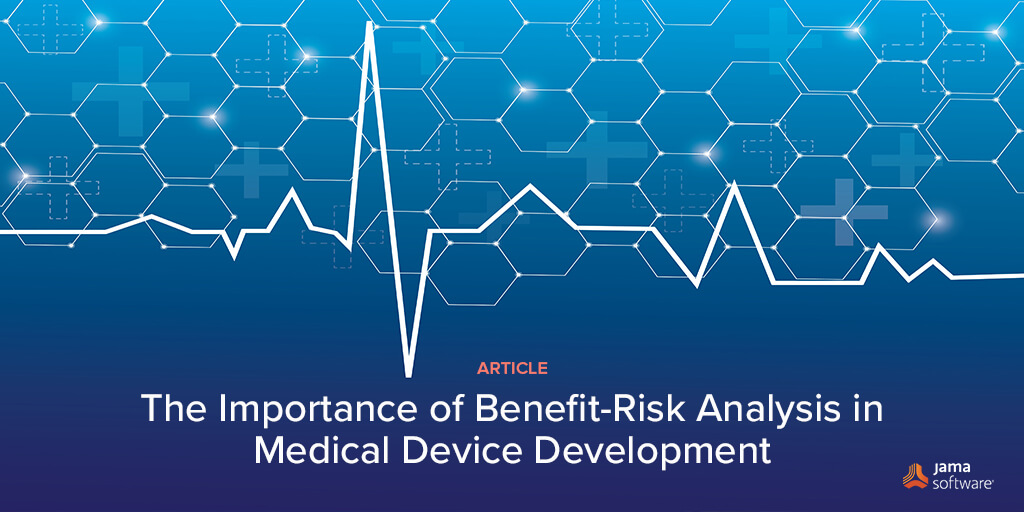
Learn about the critical role of benefit-risk analysis in the development of safe and effective medical devices, including the use of ISO 14971, regulatory requirements, and optimizing for patient needs and healthcare costs.
The Importance of Benefit-Risk Analysis in Medical Device Development
Benefit-risk analysis is a crucial stage in the creation of medical devices. It entails evaluating the device’s possible benefits as well as drawbacks and deciding if the advantages outweigh the disadvantages. This examination aids in ensuring that medical devices are reliable, safe, and capable of being used by patients without harm.
The global standard for risk management of medical devices is ISO 14971. It offers a framework for recognizing, assessing, and managing hazards related to medical devices. Manufacturers must follow the standard and conduct a benefit-risk analysis as part of the risk management procedure. To ensure that the level of risk connected with a medical device are acceptable and that the benefits outweigh the risks, this analysis is crucial.
To start a benefit-risk analysis, it is important to first determine the device’s intended use(s). The device’s intended use should be defined in detail and contain information on the patient group it is meant for, the medical problem it is intended to support, and the clinical environment in which it will be used.
RELATED: Jama Connect® Features in Five: Risk Management for Medical Device
Finding the potential advantages of the device is the next step after defining its intended usage. Benefits could include better health outcomes, more comfortable patients, and lower healthcare expenses. These advantages should be measured and contrasted with any possible risks connected to using the technology.
A medical device’s dangers may include physical harm to the patient, adverse events, and device failure, according to the definition of harm within ISO 14971. The possibility and seriousness of each risk should be evaluated, and these risks should be identified and quantified.
Even after risks have been lowered as far as possible with risk controls, there may still be some unacceptable level of risks. This is why a benefit-risk analysis is so important in medical device development.
The following stage is to assess the benefit-risk balance after the potential advantages and risks have been determined. This entails weighing the device’s possible advantages and disadvantages to decide whether the benefits outweigh the risks.
If the benefits outweigh the risks, the device may be considered safe and effective for use in the intended patient population. However, if the risks outweigh the benefits, the device may not be considered safe or effective and may need to be redesigned or modified to reduce the risks, a medical device manufacturer might also make the decision not to launch the product to market.
Benefit-risk analysis must be optimized to guarantee the safety and efficacy of medical devices.
RELATED: Validation Kit for Medical Device & Life Sciences
The benefit-risk analysis should be an ongoing process throughout the development and life cycle of the device. As new information becomes available, the analysis should be updated to ensure that the benefits still outweigh the risks, as prescribed in various regulations and standards such as 14971:2019, and EU MDR/IVDR.
Regulatory standards for medical devices should also be considered in the benefit-risk analysis. The Food and Drug Administration (FDA), which oversees medical device regulation in the US, requires manufacturers to prove their devices are safe and effective before they can be marketed or sold.
The FDA requires med device manufacturers to perform a benefit-risk analysis as part of the product development process. This analysis is used to determine whether the benefits of the device outweigh the risks and whether the device is safe and effective for use in the intended patient population.
Conducting a benefit-risk analysis is a critical step in the development of med devices. It involves identifying and evaluating potential benefits and risks and determining whether the benefits outweigh the risks. ISO 14971 provides a framework for performing a benefit-risk analysis as part of the risk management process.
Optimizing benefit-risk analysis is important for ensuring that medical devices are safe and effective, meet regulatory requirements, and are reimbursed by healthcare payers. A systematic approach that considers all relevant factors, including patient needs and preferences, and clinical outcomes.
Note: This article was drafted with the aid of AI. Additional content, edits for accuracy, and industry expertise by McKenzie Jonsson and Vincent Balgos.
Ready to learn more about managing risk in medical device development?
Watch this short video: Jama Connect® Features in Five: Risk Management for Medical Device
- [Webinar Recap] Key Systems Engineering Skills: Critical Thinking and Problem Framing - November 21, 2024
- Jama Connect® Features in Five: Medical Device & Life Sciences Solution 2.0 – Part 2 - July 28, 2023
- Jama Connect® Features in Five: Medical Device & Life Sciences Solution 2.0 – Part 1 - July 21, 2023